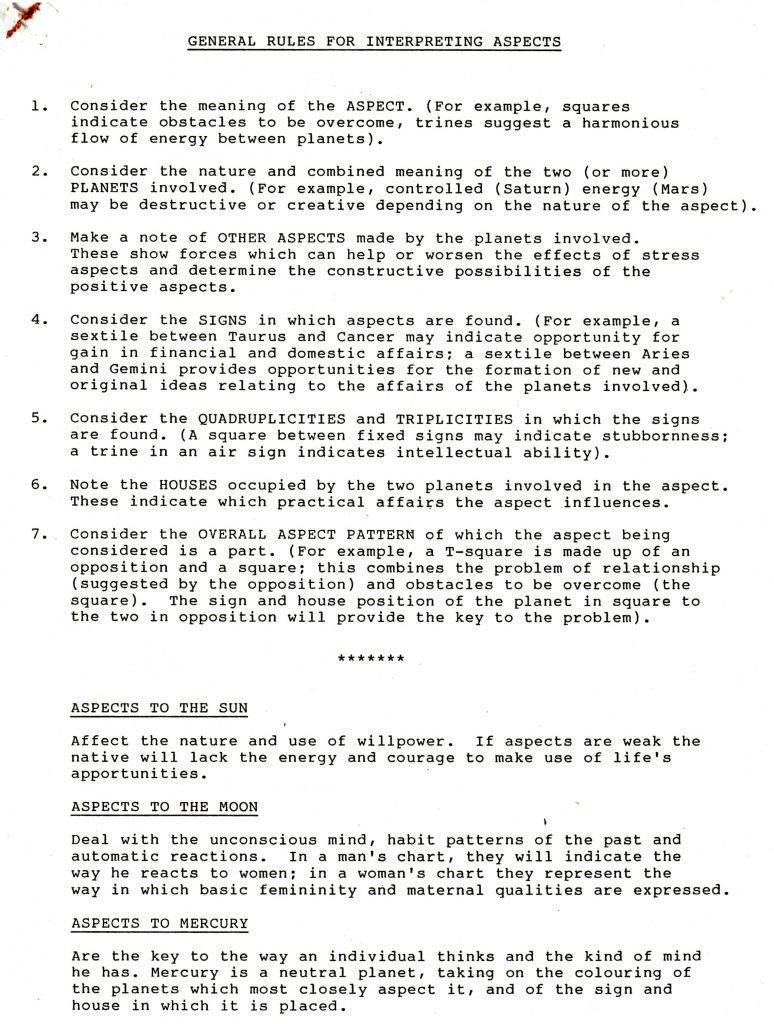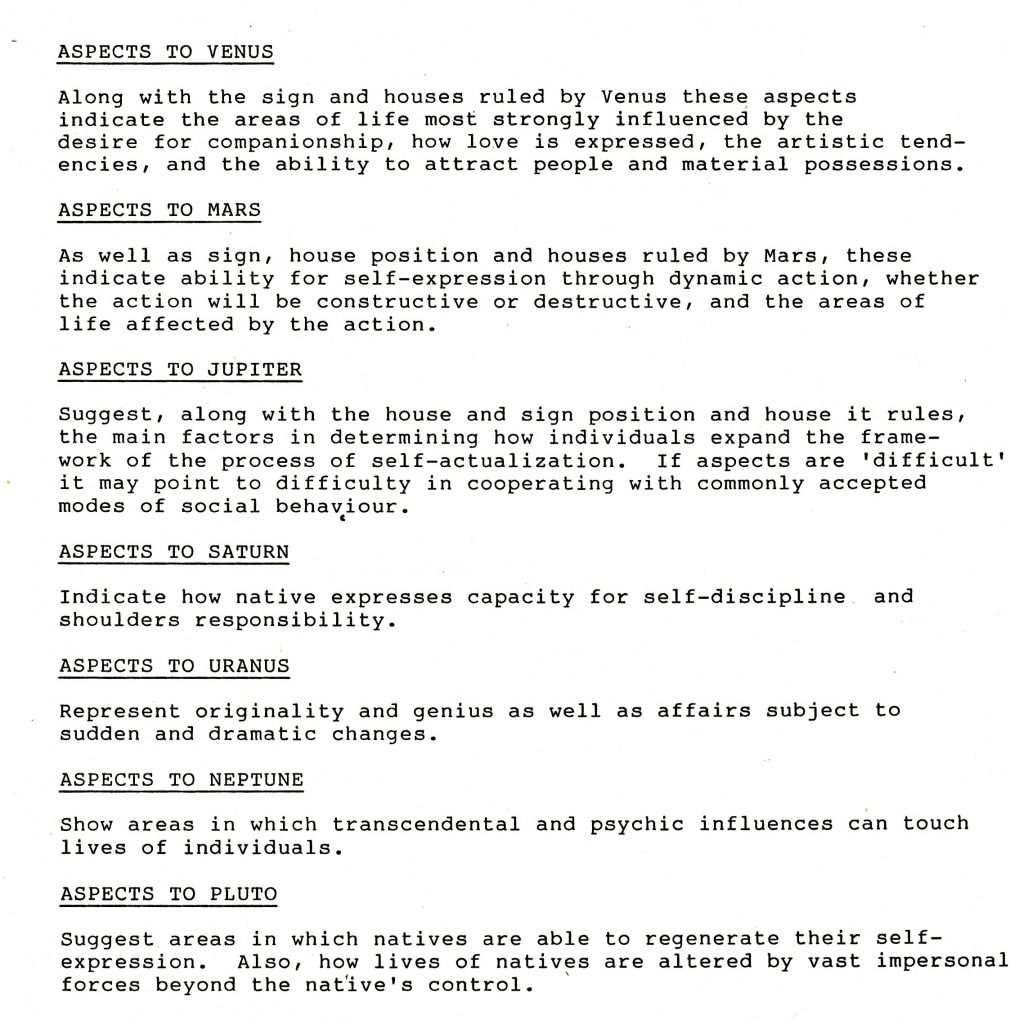The Astrological Aspects
This article titled ‘The Astrological Aspects’ formed module 6 in a series of discourses on learning Astrology by members of the Lifewave Light and Sound Meditation Group. It was written around the mid 1980s. This is a combination of the original document, and where the typography was too faded to photocopy, I was able to replace reproduce the original in google font.
So far we have looked briefly at the nature of the planets, how the planetary energies are modified by the signs in which they are found, and the spheres of life in which they manifest with the greatest intensity. The next step is to see the interrelationships between the planets and attempt to see the chart as a whole instead of disparate elements. ASPECTS are formed by the angles existing between the planets in a chart.
The main aspects in astrology are summarised below:
CONJUNCTIONS
Are formed by 2 or more planets being within 8 degrees of each other – so close in fact that their energies completely interpenetrate. This is, therefore, an aspect of intensity and power. The interpretation of a conjunction depends on the nature of the planets involved; some planetary energies blend harmoniously while others are ill suited. A lot also depends on the relative strengths of the planets according to sign and house placement.
OPPOSITIONS
Are formed when 2 or more planets are 180 degrees away from each other (+ or – 8 degrees on either side). This usually means they are in signs of their natural polarity. Opposite signs offer a potential for conflict or growth depending on how they are used, but planets in opposite signs often indicate problems in relating to others and the world in general.
SQUARES
 Are formed when 2 or more planets are within 90 degrees of each other. A square indicates a conflict of interests which will be expressed subjectively and internally and become a definite problem area if not properly resolved. It is a seat of inner tensions brought about through an inability to restructure and transmute the energies indicated by the planets involved. On a more positive note, little growth is possible in a chart where there are no difficult aspects since there is little drive to succeed.
Are formed when 2 or more planets are within 90 degrees of each other. A square indicates a conflict of interests which will be expressed subjectively and internally and become a definite problem area if not properly resolved. It is a seat of inner tensions brought about through an inability to restructure and transmute the energies indicated by the planets involved. On a more positive note, little growth is possible in a chart where there are no difficult aspects since there is little drive to succeed.
TRINES
 Are formed when two or more planets are within 120 degrees (+ – 8 of each other. ) Planets in trine support each other. Trines, by nature, are accepting. They allow us to accept others, ourselves, and situations. The talents that trines offer a native are so natural that they are almost unconscious. Often enough, natives don’t truly appreciate the talents these trines offer them, and they may not try to develop them.
Are formed when two or more planets are within 120 degrees (+ – 8 of each other. ) Planets in trine support each other. Trines, by nature, are accepting. They allow us to accept others, ourselves, and situations. The talents that trines offer a native are so natural that they are almost unconscious. Often enough, natives don’t truly appreciate the talents these trines offer them, and they may not try to develop them.
SEXTILES
 Are formed by an angle of 60 degrees(+ – 4) between planets. This is also an indication of easy flow of energy but, unlike the trine, such aspects need a little push from the will in order to be effective,
Are formed by an angle of 60 degrees(+ – 4) between planets. This is also an indication of easy flow of energy but, unlike the trine, such aspects need a little push from the will in order to be effective,
These main aspects indicate whether energies between planets are flowing harmoniously or otherwise. They cannot, however, be seen in isolation but must be viewed as part of a greater whole for an accurate picture. For example, an opposition between 2 planets may be alleviated by a third planet, trine one planet and sextile another, forming what is called an easy opposition. The challenge indicated by the opposition would, in such a case, be resolved through the affairs of the planet, sign and house forming the third end of this planetary picture.
GENERAL RULES FOR INTERPRETING ASPECTS




